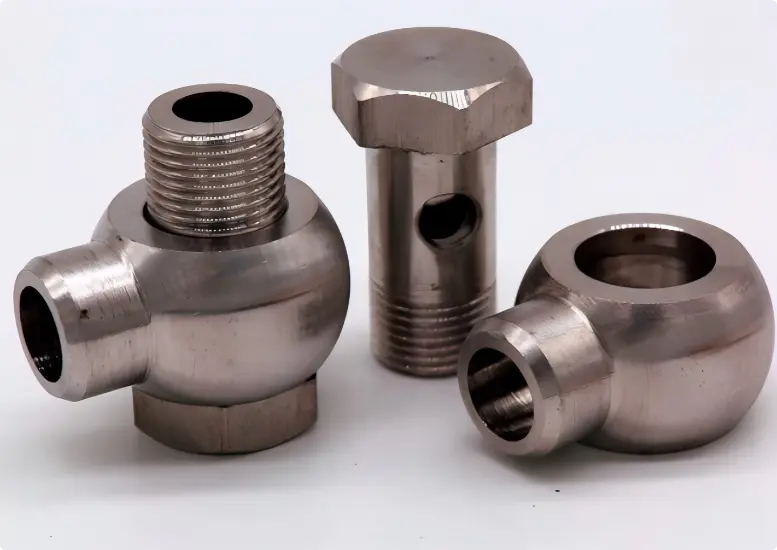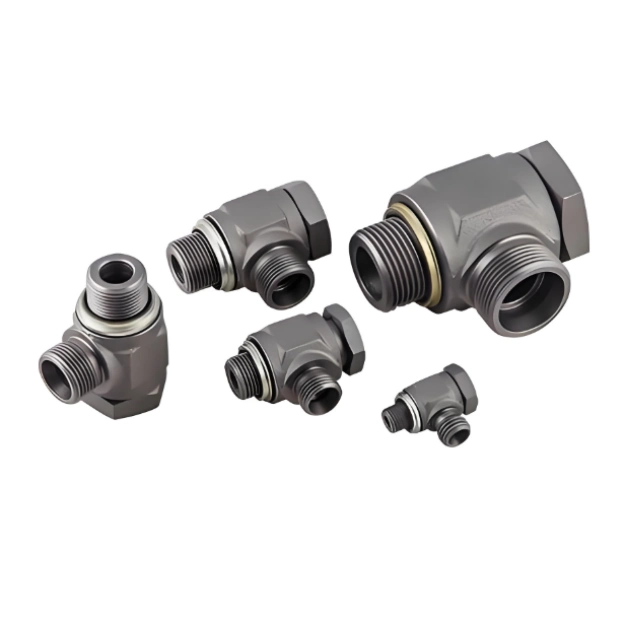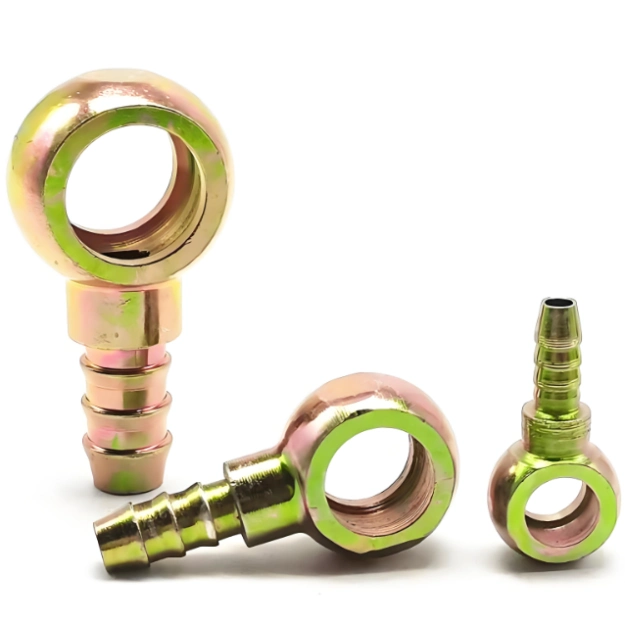Hydraulic Banjo Fittings (Banjo Fittings) is a key fluid connection in the hydraulic system, named for its shape similar to the musical instrument “banjo”, mainly used in the braking system, oil circuit and other scenarios.

Banjo Fittings Its common problems can be divided into the following six categories, combined with the causes and solutions are described below:
First, the leakage problem
Performance : Loose bolts, gasket aging or sealing surface damage caused by hydraulic oil / brake fluid leakage.
Causes: vibration, thermal cycling, insufficient installation torque or seal corrosion.
Solution:
Regulate installation torque: Use a torque wrench to tighten bolts according to the manual (e.g. SWAGE LINE requires strict adherence to the manual to avoid over-tightening or over-loosening).
Replace gaskets regularly: Replace gaskets (e.g. aluminum or copper seals) with new ones after each disassembly, making sure that the sealing surface is flat and free of scratches.
Clean the sealing surface : Remove oil and particles before assembly to prevent seal failure.
Second, rotation and misalignment problems
Manifestation: Vehicle vibration or operational impact causes the banjo block to rotate around the bolt, damaging the sealing path.
Cause : Traditional design has no anti-rotation structure and loosens after long-term stress.
Solution:
Adopt an anti-rotation design: Select a banjo plate with a Positioning Notch that fits over the stop screw on the face of the hydraulic component to physically limit rotation.
Installation of Anti-Loosening Shims: Increase the vibration resistance of the bolts by using a toothed shim or Loctite thread adhesive.
Wear and Corrosion Problems
Manifestations: Scratches on sealing surfaces, worn bolt threads, or corrosion of metal (e.g., rust, stripped plating).
Causes:
Fluid contamination: water or particles in the fluid accelerate wear (e.g. cavitation, adhesive wear).
Material intolerance: Aluminum parts corrode easily in acidic brake fluids, and stainless steel may pitting in salt spray environments.
Solution:
Upgrade the material grade :
Use galvanized carbon steel (salt spray test ≥ 72 hours) or stainless steel (e.g. SWAGELINE’s SUS304 mesh sleeve) for highly corrosive environments.
Avoid the use of aluminum fittings in acidic media (e.g. certain brake fluids).
Change the hydraulic fluid regularly: control the cleanliness of the fluid (NAS 1638 standard) and install filters.
IV. Misassembly Problems
Manifestation: Left and right side banjos are installed backwards, hoses are installed at the wrong angle resulting in poor sealing or interference.
Cause: Symmetrical design lack of error-proof marking, operation depends on experience.
Solution:
Foolproof Design Application: Use asymmetrical positioning notches to ensure installation in the correct direction only.
Color/label marking: Reduce the risk of mis-installation by using different color rings to differentiate between suitable models, for example.
V. Material and Pressure Compatibility Problems
Manifestation: Overpressure burst (e.g. aluminum parts limited to 300 PSI, carbon steel up to 232 PSI), temperature deformation (10 ° C ~ 70 ° C outside the failure).
Cause: improper selection or system pressure fluctuations.
Solution:
Strictly match parameters:
Stainless steel for high temperature systems (150°C), carbon steel for high pressure scenarios (e.g., systems over 16 bar).
Confirm that the thread standard (NPT/BSPP) is compatible with the piping.
Installation of pressure relief valves: inhibit hydraulic shock, to protect the weak interface.
VI. Installation and operation standardization problems
Manifestation: Forced installation damages threads, hose twisting leads to early cracking.
Cause : Failure to follow the manual or use of non-supporting tools.
Solution:
Professional installation and training:
operated by a certified shop (e.g. SWAGE LINE emphasizes safety certification).
No mixing of branded parts (leakage due to differences in seal sizes).
Regular maintenance checks : Every 6 months, check torque, seal condition and hose ageing (cracks/swelling).
Critical Problems and Solutions Quick Checklist
| Problem Type | Main Causes | Core Solutions |
| Leakage problems | Seal failure, loose bolts | Regulate torque + Replace gaskets regularly |
| Rotation and Positioning Problems | Vibration Causes Rotation Misalignment | Anti-Rotation Design + Anti-Loosening Shims |
| Wear and Corrosion Problems | Contamination, Materials Not Resistant to Media | Upgraded Materials + Oil Filtration |
| Assembly Error Issues | Symmetric Design Lacks Fault Prevention | Asymmetric Interfaces + Color Markings |
| Compatibility problems | overpressure, overtemperature, thread mismatch | parameter matching + pressure cushioning |
| Code of Practice Issues | Unprofessional Installation, Mixed Brands | Certified Installation + Prohibition of Mixed Parts |
Summary Recommendations
The reliability of hydraulic banjo fittings depends on design error-proofing (e.g., asymmetric positioning), material suitability (pressure/medium/environment), and regulated maintenance (torque cycles, contamination control). Prioritizing products that meet ISO/JIS standards and establishing a preventive maintenance program can reduce failures by more than 80%. For critical systems (e.g. brakes), be sure to follow the hydraulic banjo fittings manufacturer’s manual and have them operated by a professional. If you have any other questions related to hydraulic banjo fittings, please contact our engineers, who will answer your questions for free.





